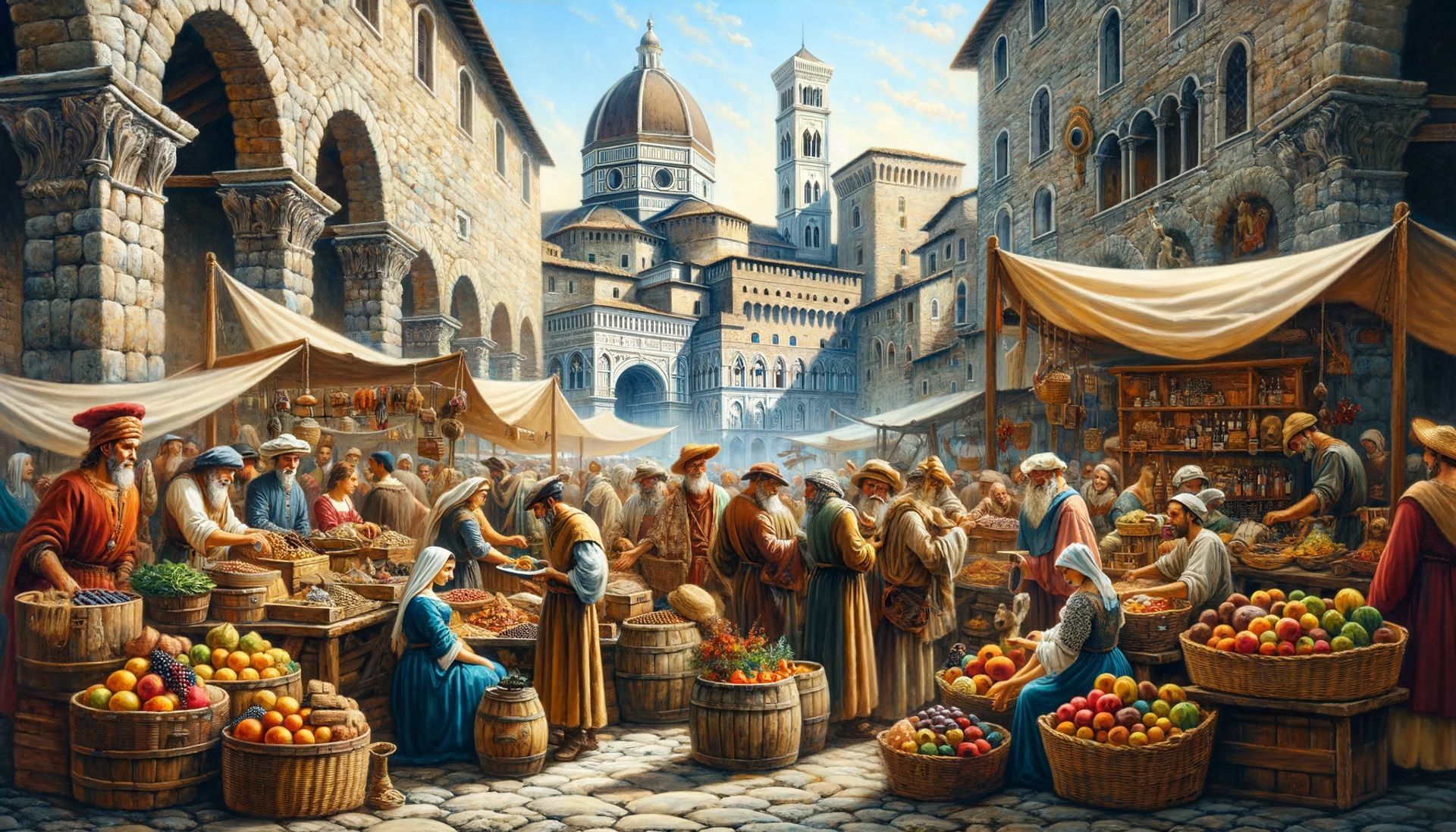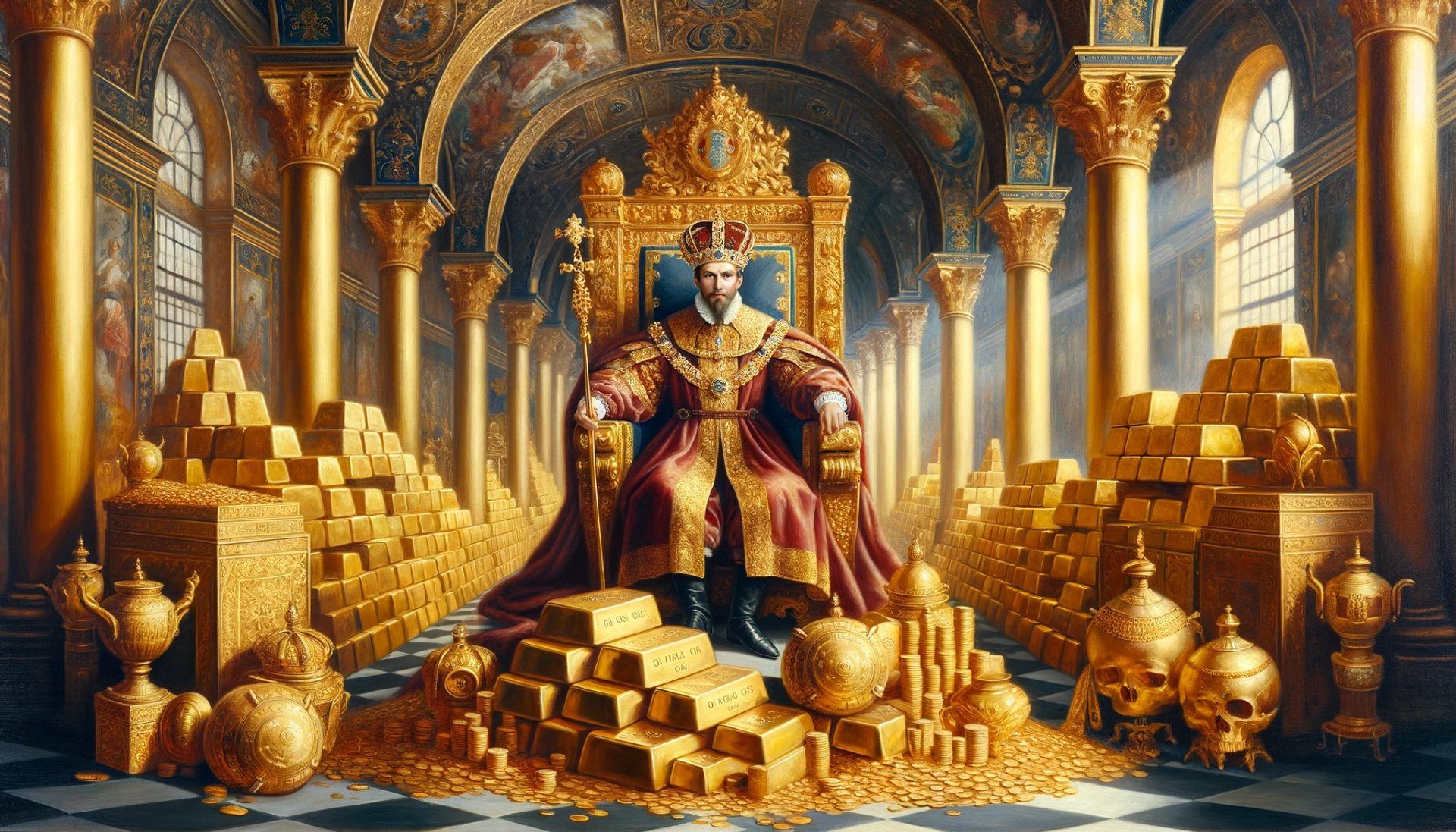
The modern state system was a framework that governed the political and economic characteristics of nations, as well as the behavior of those nations internationally. This system had its roots in European history, and was based on a series of principles that were adopted roughly by consensus. Understanding it requires a look at its historical origins, at the principles that shaped it, and at the pivotal role of the Peace of Westphalia in its international prevalence.
From feudal states to modern states
During the Middle Ages, Europe was dominated by a political system known as Feudalism, in which power was decentralized in the hands of many feudal lords. While they ruled over rural properties known as fiefs, the kings had little importance. However, a series of developments, beginning in the 14th century, weakened the power of the feudal lords and reinforced that of the kings.
The economy on the fiefs was based on self-sufficient agriculture: the serfs produced just enough food to feed themselves and their lords. There was no point in producing more, because few dared to leave the safety of the fief and try to sell surpluses elsewhere. But all would change as new agricultural tools emerged and became popular: the iron plow, the sickle and the hoe, as well as the usage of water and wind as the propelling force in production. These advances boosted the harvest and had important consequences:
- With more and better food, the mortality rate of serfs diminished considerably. Europe’s population increased, and some serfs left their original fiefs, either looking for more arable land or for cities.
- Given the abundance of food, there was finally an incentive for people to sell them. For this reason, commerce thrived both within the fiefs, under the protection of the feudal lords, and on the outskirts of the fiefs.
At the time, Jerusalem — the Holy Land — was ruled by Muslims, and the Catholic Church wanted to regain control of it. Since the 11th century, there have been expeditions known as the Crusades, in which Europeans went to the Middle East to fight the Muslims. While the religious nature of this undertaking was never abandoned, it gained a commercial undertone as well. The explorers began to tap into the long-distance trade of oriental spices and other products, taking them from the East Indies to Europe through trade hubs like Genoa. The selling of these products also helped to develop street markets and small villages, taking even more power away from the feudal lords.

The tipping point in the transition from Feudalism to the modern state system was a crisis of hunger, disease and wars.
In 1315, heavy rains fell upon the European continent, disrupting food production and leaving millions of people in a state of chronic starvation. As a consequence, cannibalism became commonplace in Ireland, in Poland and in the Holy Roman Empire, for instance. Also, from 1348 onwards, the Yersinia pestis bacterium spread over Europe by fleas and by people’s bodily fluids. This pathogen causes the bubonic plague, a highly deadly disease that led to a pandemic called the Black Death. Both hunger and disease contributed to growing discontent among Europeans and encouraged them to flee the fiefs in search of safer places.
While the merchant class and the villages where they operated gained prominence, Europeans died not only from lack of food and from disease, but also from wars. From 1337 to 1453, England and France fought over the French throne in the Hundred Years’ War, which claimed the life of over 2 million people. Roughly at the same time, the European inhabitants of the Iberian Peninsula were on the verge of expelling the Moor invaders — Muslims who had occupied the region many centuries before. These interminable wars reinforced the power of kings, who created standing armies, but weakened that of the feudal lords, who had to finance military expenditures much like the thriving bourgeoisie.
Over time, kings concentrated more and more power on their hands, eventually leading to the end of Feudalism and the establishment of the modern states.
Absolutism & Mercantilism in the modern state
In politics, the modern European state was based on Absolutism: an autocratic political system in which the king or queen had absolute power. The monarch could create laws, impose taxes, administer justice, oversee the Church and grant titles and privileges to noblemen. Only God was above the monarch, and there were two main theories that explained why he or she had so much power:
- The doctrine of the divine right of kings: according to this Christian doctrine, the monarch is not accountable to anyone on Earth, because their right to rule emanates from God’s wish. The main proponent of these ideas was Jean Bodin, who said that only kings could create laws. Another proponent was Jacques Bossuet, a French bishop who believed that common people had to follow the monarch’s orders unquestionably.
- Secular doctrines about the power of kings: these doctrines were created by philosophers who minimized the role of God in legitimating the monarch. According to Thomas Hobbes, people accepted monarchical rule because, otherwise, they would not have enough peace and security. Niccolò Machiavelli, in turn, posited that the monarch should do whatever it takes to remain in power and keep the state safe — irrespective of moral imperatives.
Although these theories justified absolute governance, that is not to say that the three estates of modern (as well as medieval) society did not support monarchs.
- The first estate, the clergy, composed of members of the Roman Catholic Church, supported the monarchy because it wanted to monopolize the religious order and keep the privileges that it had — such as not paying taxes and collecting 10% of people’s earnings to the Church, as tithes.
- The second estate, the nobility, composed of people with titles and ranks, supported the monarchy because it wanted to keep its privileges as well.
- The third estate, the common people, had many reasons to support the monarchy. The bourgeoisie needed royal measures, such as standardizing weights and measurements and minting national coins, to facilitate the exchange of goods. Meanwhile, the peasants and the urban poor saw the monarchs as guarantors of the social order against troubling times.
The modern state had standing armies, that did not disband following a conflict, and permanent bureaucracies, comprised of nobles and representatives of the bourgeoisie, that administered the state in an increasingly professional way. When the king or queen died, they were usually succeeded by their offspring, in an hereditary system in which birth rights determined one’s place in society.
In economic terms, the modern state adopted what came to be known as Mercantilism: a series of monopolistic practices that ensured the state had enough money to fulfill its ever greater bureaucratic and military expenditures. These were the ideas at the core of mercantilist thought:
- Economic nationalism: The national economy should not depend upon other economies.
- Protectionism in the pursuit of a favorable balance of trade: The national economy would not grow if more money went to other countries than stayed on it. Consequently, the importation of goods from abroad was to be discouraged, while exports were to be encouraged.
- Accumulation of precious metals: At the time, metals such as gold and silver were the main sources of wealth. Thus, a state was supposed to increase its metal reserves, at the expense of other states.
- Colonialism: In time, Europeans would turn to other continents as source of wealth and prestige. They would acquire colonies, exploit them, and perpetuate the subjugation of other civilizations.

The Peace of Westphalia: the international dimension of the modern state
By the end of the Middle Ages, Europe was ravaged by religious wars between Catholics and Protestants — and between the monarchies that embodied each of these tendencies. In the Holy Roman Empire, there were the Knights’ Revolt, the German Peasants’ War, and the Schmalkaldic War. In Sweden, there were the three Dalecarlian Rebellions. In the Kalmar Union (composed of Denmark and Norway), there were the War of Two Kings and the Count’s Feud. In England, the Tudor dynasty and their Protestant allies conquered the Catholic population of Ireland.
All of these conflicts were bloody, but the most significant of them was the Thirty Years’ War (1618-1648). It had been caused by the expansion of Protestantism within Catholic domains inside the Holy Roman Empire. Soon, it degenerated into a struggle between France and the House of Habsburg, both fighting for hegemony in Central Europe. The war led to 4 to 8 million deaths, and it ended in a series of meetings in Osnabrück and Münster, called the Peace of Westphalia.
More than ending a war, the Westphalian settlement inaugurated a new political order among European states, with the following characteristics:
- Every state would have sovereignty over its territory and domestic affairs, free from external interference, including in religious matters.
- Every state was considered to be equally sovereign — that is, in theory, there was no hierarchy among states.
- There began the practice of sending permanent ambassadors to other countries, in order to facilitate communications between them.
For many historians, the Peace of Westphalia marked the birth of modern international relations. Yet some scholars, such as Andreas Osiander, consider that to be a myth, because the characteristics above were not explicitly mentioned within the treaties of Osnabrück and Münster. In any case, after 1648, most of Europe would be ruled by monarchies who endorsed mercantilism and engaged with one another according to the rules set out in the Westphalian settlement.
Leave a Reply